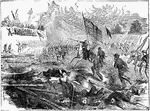
Acquia Creek
"The attack upon the batteries at the entrance of Acquia Creek, Potomac River, by the United States…

Advance of the Federal Army towards Yorktown
When General McClellan reached Locst Hill, on april 2nd, 1862, he found fifty-eight thousand men and…
!["A detachment of the First South Carolina [African American] Federal Volunteers, under command of Colonel Beard, in the United States transport steamer <em>Darlington</em>, picking off Confederate sharpshooters concealed in the trees on the banks of the Sapelo River, Ga."— Frank Leslie, 1896](https://etc.usf.edu/clipart/11600/11647/aa-volunteer_11647_mth.gif)
African American Volunteers
"A detachment of the First South Carolina [African American] Federal Volunteers, under command of Colonel…
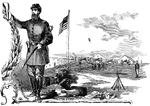
Aid-de-camp
"New Jersey Camp at Arling, Va., designated as Camp Princeton in honor of one of the Revolutionary battle…
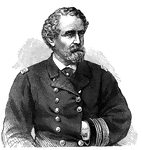
Rear Admiral James Alden
"Rear Admiral Alden, born in Portland, Me., March 31st, 1810, died in San Francisco, Cal., February…
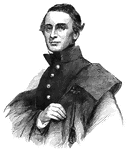
Major Robert Anderson
"Major Robert Anderson, the commander of Fort Sumter at the time of its fall, was born in Kentucky in…
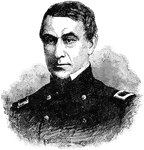
Major Robert Anderson
Robert Anderson (1805 - 1871) was a Union Army officer in the American Civil War. He is most known for…
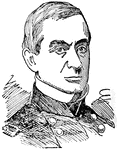
Robert Anderson
(1805-1871) Soldier during the Civil War who commanded the Federal Garrison at Fort Sumter the signaled…

Union Prisoners Confined at the Confederate Prison at Andersonville
Union soldiers being held at Andersonville, a Confederate prison.

Anne
"Capture of the British steamer Anne laden with arms and munition of war for the Confederates,…

Antietam
"The invasion of Maryland--General Meade's Army crossing the Antietam in pursuit of Lee, July 12th,…
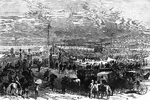
Antietam National Cemetary
"The dedication of the Antietam National Cemetary, at Sharpsburg, Md., on Tuesday, September 17th, 1867.…
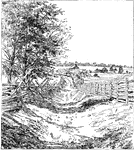
Sunken Road at Battle of Antietam
The Sunken Road at the Battle of Antietam. The Battle of Antietam, also known as the Battle of Sharpsburg,…
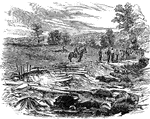
Sunken Road at Battle of Antietam
Scene at the Sunken Road at the Battle of Antietam. The Battle of Antietam, also known as the Battle…
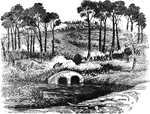
Battle of Antietam
"Battle of Antietam, Md. Burnside's division carrying the bridge over the Antietam Creek and storming…

Battle of Antietam
Scene by rail-fence, Antietam after the Battle of Antietam, also known as the Battle of Sharpsburg.…

Battle of Antietam
The Battle of Antietam, also known as the Battle of Sharpsburg, was fought on September 17, 1862, near…

Battle of Antietam
"Battle of Antietam, Burnside's Division, left wing- brilliant and decisive bayonet charge of Hawkins's…

Battle of Antietam
"Battle of Antietam- the opening of the fight- Hooker's division fording the Great Antietam Creek to…

Battle of Antietam
"Battle of Antietam. The centre and right wing of General McClellan's Army, commanded by Generals Hooker,…

Battle of Antietam
"The battle of Antietam. The One Hundred and Thirtieth Pennsylvania Regiment of Volunteers burying the…

Battle of Antietam
"Battle of Antietam, Burnside's Division, left wing- brilliant and decisive bayonet charge of Hawkins's…

Battle of Antietam
"Battle of Antietam, Burnside's Division, left wing- brilliant and decisive bayonet charge of Hawkins's…
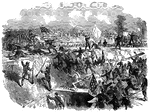
Arkansas Post
"The capture of Arkansas Post, Ark. General Stephen G. Burbridge, accompanied by his staff, planting…

Destruction of the Arkansas
Destruction of the Arkansas during the Battle of Baton Rouge naval battle.

Badge of the Army of the Cumberland
"The Army of the Ohio was a division of the Federal army in the Civil War; organized in 1861-1862 by…
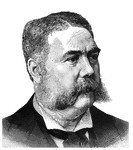
General Chester A. Arthur
"General Arthur, twenty-first President of the United States, born in Fairfield, Franklin County, Vt.,…

Artillery Practice
"Artillery practice with the Dahlgren Howitzer boat gun- loading."— Frank Leslie, 1896

Artillery Practice
"Artillery practice with the Dahlgren Howitzer boat gun- officer giving the word of command to fire."—…

Atlanta, Georgia in 1874
An illustration of Atlanta, Georgia as depicted in 1874. Atlanta, GA is the capital and the most populous…
Siege of Atlanta
"The Siege of Atlanta, Ga.- Confederate attack on General Logan's Corps, July 28th, 1864. The assailants…

Attack of the Gunboats at Fort Donelson
Attack of the gunboats at Fort Donelson, one of the most influential battles in American history. This…
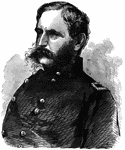
General Christopher C. Augur
"General Augur, born in New York in 1821, was graduated from the United States Military Academy in 1843.…
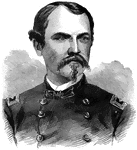
General W. W. Averill
"General Averill, born in Cameron, Steuben County, N. Y., November 5th, 1832, was graduated at the United…
!["[African American] drivers of the baggage train attached to General Pleasonton's Cavalry brigade watering their mules in the Rappahannock. General Pleasonton's cavalry was attended by a very efficient forage brigade, consisting of mules and [African American] riders. Our sketch represents their drivers taking them to water at the river. The hard work these animals will endure is something wonderful, and justifies the high estimation in which they are held in the army." — Frank Leslie, 1896](https://etc.usf.edu/clipart/11000/11025/baggagetrain_11025_mth.gif)
Baggage Train
"[African American] drivers of the baggage train attached to General Pleasonton's Cavalry brigade watering…
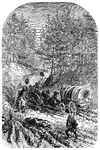
Federal Baggage Train
"Federal baggage train on its way to the army at Falmouth, VA., December, 1862. Our illustration represents…

Baggage Train Wagon
"Federal baggage train on its way to the army at Falmouth, VA., December, 1862. Our illustration represents…
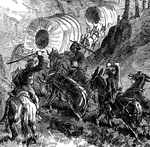
Baggage Train to Falmouth, VA
"Federal baggage train on its way to the army at Falmouth, VA., December, 1862. Our illustration represents…

Battle of Baker's Creek
"Battle of Baker's Creek, May 16th, 1862- Defeat of the Confederates under Pemberton, by General Grant.…
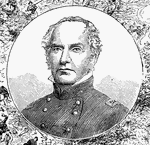
Colonel Edward Dickinson Baker
Colonel Edward Dickinson Baker (1811 - 1861) who served for the state of Illinois in the U.S. House…
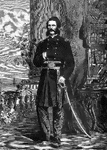
General Lafayette C. Baker
"General Baker, Chief of the United States Secret Service, born in Stafford, Genesee County, N. Y.,…

Battle of Ball's Bluff
The Battle of Ball's Bluff is also known as the Battle of Harrison's Island or the Battle of Leesburg,…

Battle of Ball's Bluff
The Battle of Ball's Bluff is also known as the Battle of Harrison's Island or the Battle of Leesburg,…

Banks Expedition
"The Banks Expedition- scene on the hurricane deck of the United States transport North Star-…
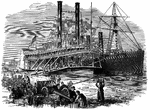
Banks Expedition
"The Banks Expedition- scene on the levee, Baton Rouge, La. Contrabands unloading military stores from…
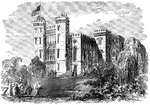
Banks's Expedition
"Banks's Expedition- Executive Officer Parker, of the United States gunboat Essex, hoisting…
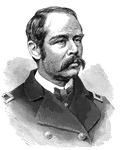
General Francis C. Barlow
"General Barlow, born in Brooklyn, N. Y., October 18th, 1834, was graduated at Harvard in 1855. In 1861…

Battle of Baton Rouge
The Battle of Baton Rouge, also known as Magnolia Cemetery, was a ground and naval battle in the Civil…
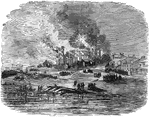
Burning of Baton Rouge
"Banks's Expedition- burning of the state capitol of Louisiana, Baton Rouge, Tuesday night, December…

Gunboats at the Battle of Baton Rouge
Gunboats at the Battle of Baton Rouge, also known as Magnolia Cemetery, was a ground and naval battle…

Artillery Battery
During early wars, like the Civil War, artillery battery was a term for a unit of guns or mortars used…
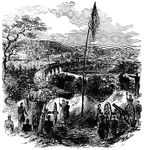
Bouquet Battery
"The Bouquet Battery, commanding the viaduct over the Patapsco River, on the Baltimore and Ohio Railroad,…







